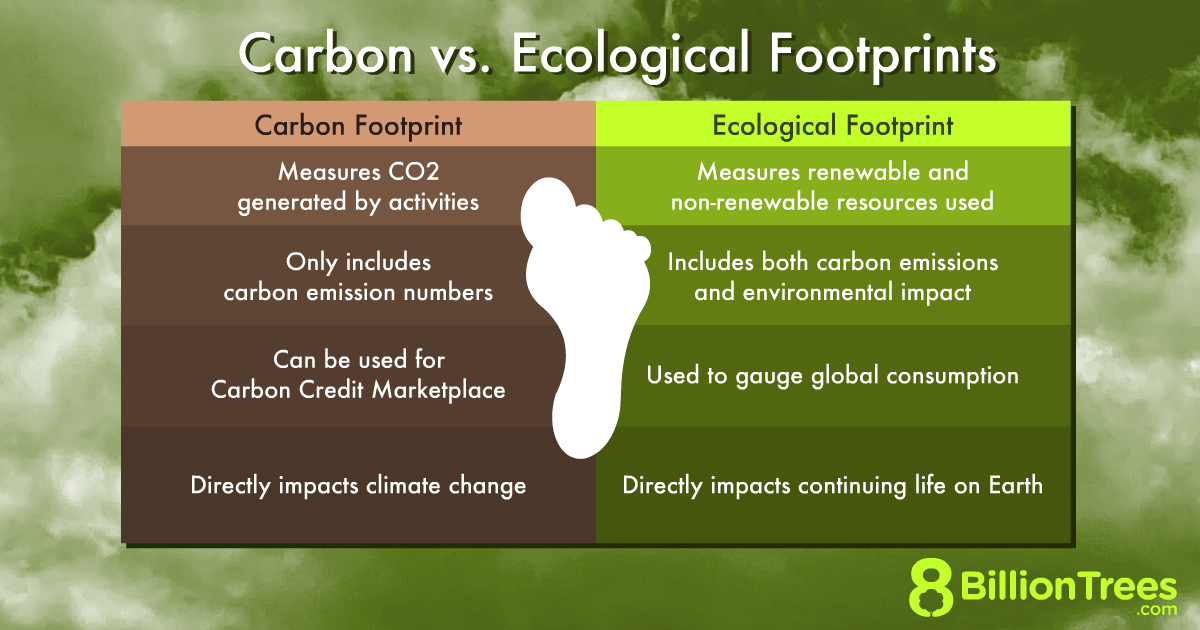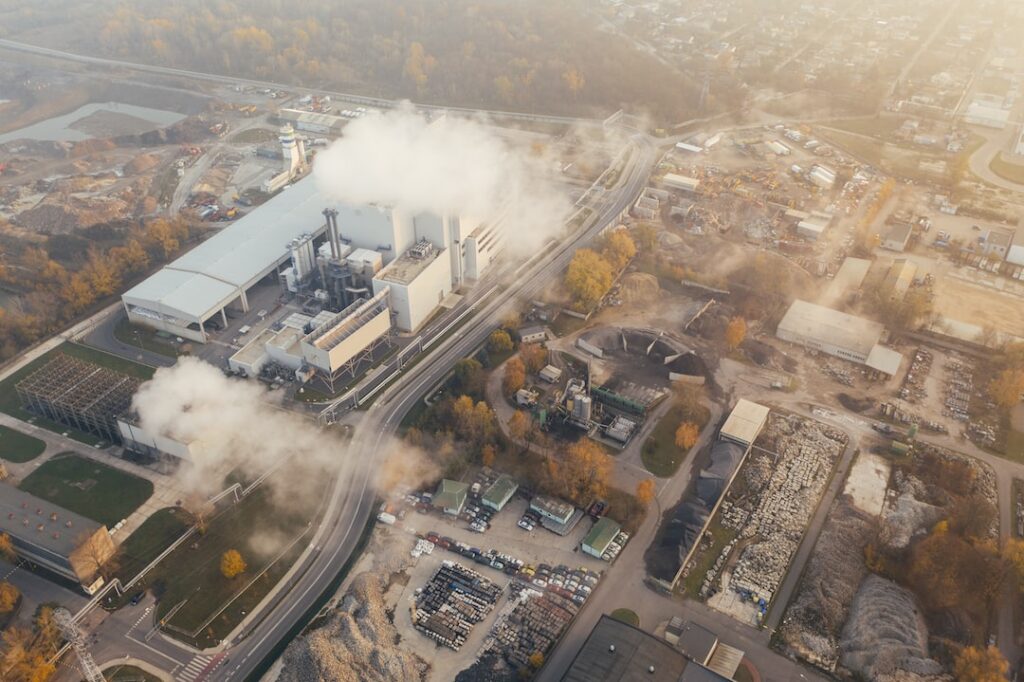How is a carbon footprint different from an ecological footprint? A carbon footprint is the total amount of greenhouse gases emitted by an individual, event, organization, or product over a given period of time. An ecological footprint is a measure of human impact on the environment.
Why should you care how is a carbon footprint different from an ecological footprint?
The type of calculation you choose will depend on your goal.
If you want to reduce your overall impact on the environment, then calculating your ecological footprint is a better choice because it gives you a more comprehensive view of your actions that contribute to climate change.
However, if your primary concern is reducing emissions from burning fossil fuels, then tracking your carbon footprint would be most relevant for you.
Table of Contents
What Is a Carbon Footprint?
When you hear the term carbon footprint, you may automatically think about your car’s emissions. And while vehicle emissions are a big contributor to your carbon footprint, they’re not the only thing to consider.
A carbon footprint is the total greenhouse gas (GHG) emissions caused by an individual, event, organization, service, or product, expressed as carbon dioxide equivalent (CO2e).
Your carbon footprint is the sum of all emissions of greenhouse gases like carbon dioxide (CO2), methane, nitrous oxide, and fluorinated gases that come from the burning of fossil fuels, from manufacturing and other industrial processes, and from land-use changes and forestry.
They’re all released into the atmosphere and they all contribute to climate change. You can think of your carbon footprint as your own personal contribution to climate change.
And just like anything else, the more you have, the more harm it can do.
So, how do you know what your carbon footprint is?
There are a few different ways to calculate it. You can use a carbon footprint calculator, which will ask you questions about your daily activities and estimate your footprint based on your answers.
You can also try a more hands-on approach and track your emissions for a week or a month. This will give you a more accurate idea of your footprint, but it can be a lot of work.
Once you know your carbon footprint, you can start working on reducing it. There are a lot of small changes you can make in your daily life that can add up to big reductions in your emissions.
- Walk or ride your bike instead of driving.
- Take public transportation.
- Turn off the lights and appliances when you’re not using them.
- Recycle and compost.
- Buy energy-efficient products.
- Plant trees.
Every little bit helps. And the more people who take action to reduce their carbon footprints, the better off we’ll all be.
Now that you know what a carbon footprint is, you might be wondering how is a carbon footprint different from an ecological footprint.
 (Source)
(Source)
What Is an Ecological Footprint?
An ecological footprint is the amount of land and water an individual, population, or activity uses to produce the resources it consumes and to absorb the waste it generates (biocapacity), using prevailing technology.
It is a measure of the demand for natural capital that a human population makes on the planet.
Your ecological footprint is the total amount of land and water that you use to support your lifestyle. It includes the resources you use to produce the food you eat, the water you drink, the energy you use, and the waste you produce.
Your ecological footprint is bigger than your carbon footprint.
Like your carbon footprint, your ecological footprint can have a big impact on the environment. And the good news is, there are a lot of ways to reduce it.
- Eat less meat and dairy.
- Buy local and seasonal produce.
- Use less water.
- Reduce, reuse, and recycle.
- Compost.
By making even small changes in your daily life, you can make a big difference in the environment.
So, what are you waiting for?
Now that you know how is a carbon footprint different from an ecological footprint, you can start taking steps to reduce your impact on the environment. Every little bit helps.
And together, we can make a big difference.
How Are They Different?
Your carbon footprint is a subset of your ecological footprint. The ecological footprint takes into account the land and water used to produce the resources consumed and to absorb the waste generated, while the carbon footprint only looks at the GHG emissions.
The ecological footprint can be used to measure the sustainability of a population or activity, while the carbon footprint is often used as a measure of the impact of GHG emissions on climate change.
Your carbon footprint is the total amount of greenhouse gases that you produce. This includes the carbon dioxide that you produce from burning fossil fuels like coal, oil, and natural gas.
Your ecological footprint is the total amount of land and water that you use. This includes the land that you live on, the food that you eat, and the water that you drink.
Why Does It Matter Which One You Use?
We often hear the terms “carbon footprint” and “ecological footprint” and think they’re interchangeable. But there is a big difference between the two, and it’s important to understand which one you’re talking about when discussing the environment.
They both help us to understand our impact on the environment and can be used to guide decision-making.
For example, if you’re trying to reduce your carbon footprint, you might choose to take public transportation instead of driving. Or if you’re trying to reduce your ecological footprint, you might choose to eat less meat.
The bottom line is that both carbon footprints and ecological footprints are important, and by understanding our impact on the environment, we can make better choices that will help protect our planet.
Conclusion
Overall, it’s important to be aware of how is a carbon footprint different from an ecological footprint. Reducing your impact on the environment is a complex issue and requires changes in many areas of your life.
However, every little bit counts, and by making small changes in your daily habits, you can make a big difference for the planet.
We all know that we need to take care of our planet, but sometimes it’s hard to know where to start. That’s why Vitality is here to help! We offer a variety of services designed to reduce your carbon footprint and make a positive impact on the environment.
From solar panel installation to energy efficiency consulting, we can help you go green and save money at the same time. Contact us today!





